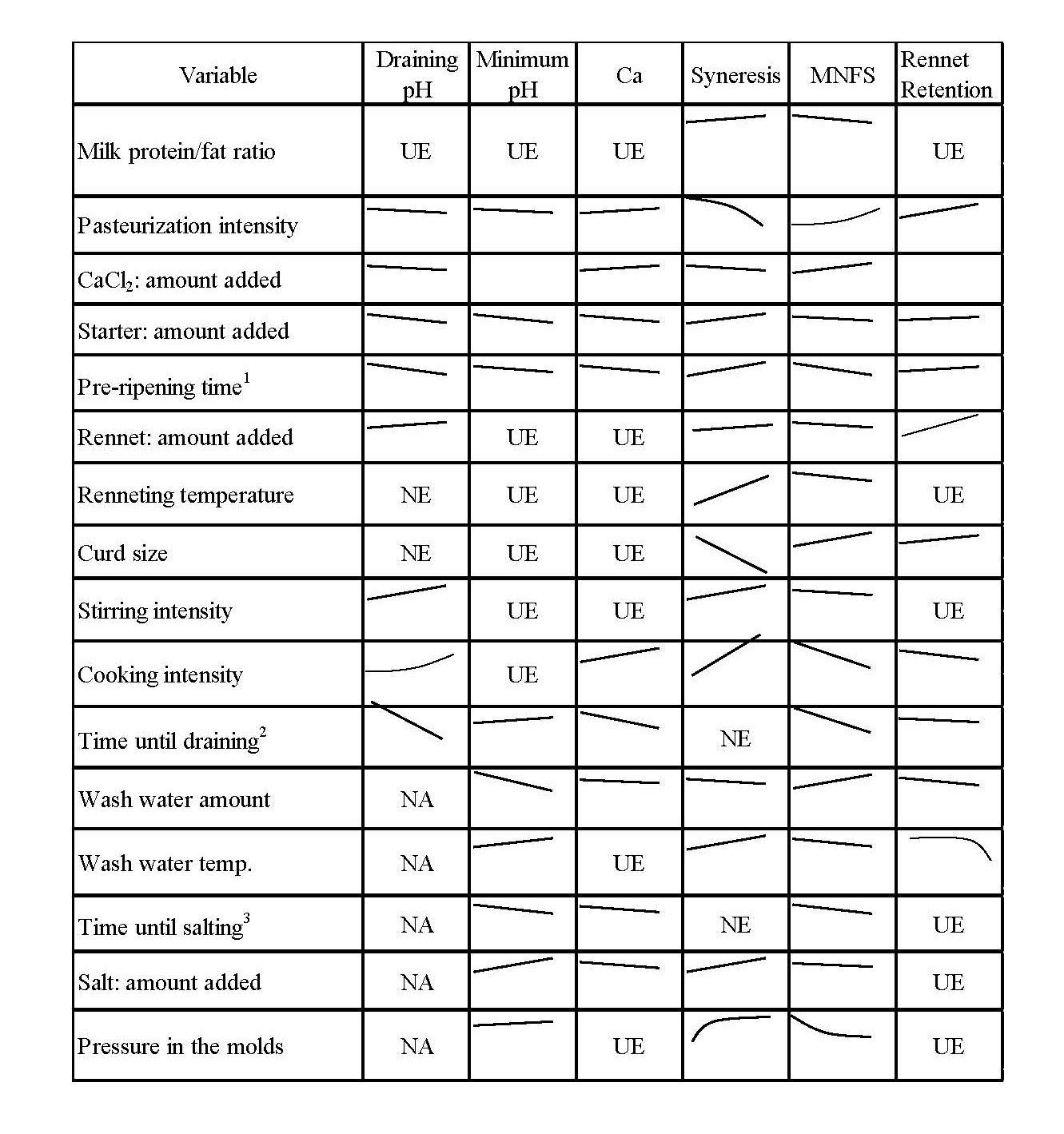Introduction to Cheese Making
1 The Basic Process
Cheese making can be described as the process of removing water, lactose, and some minerals from milk to produce a concentrate of milk fat and protein. The essential ingredients of cheese are milk, coagulating enzyme (rennet), bacterial cultures, and salt. Rennet causes the milk proteins to aggregate and ultimately transform fluid milk to a semi-firm gel. When this gel is cut into small pieces (curds), the whey (mostly water and lactose) begins to separate from the curds. Acid production by bacterial cultures is essential to aid expulsion of whey from the curd and largely determines the final cheese moisture, flavour, and texture. A flow chart showing the general operations of cheese making is in Figure 1.1. Figure 1.2 illustrates, very diagrammatically and generally, associations among some cheese processing parameters and some cheese properties. As we consider various aspects of cheese making (the trees) please return to these Figures 1.1 and 1.2 to help keep the over all perspective (the forest) in view.
Figure 1.1. Flow chart of Cheese Making Processes. Adapted from Hill, 2007

Figure 1.2: Effects of particular processing conditions on various cheese making parameters.
Effects of particular processing conditions, assuming other factors do not change, on pH at draining, minimum pH occurring in the cheese during early stages of curing, calcium retained in the cheese, the rate of syneresis, the moisture in the non-fat substance (MNFS) and the amount of calf rennet activity retained in the cheese. Trends shown here apply to most rennet coagulated cheese within normal ranges of moisture content and percent fat in the dry matter. U = Unknown effect, but likely small. NE = no effect. NA = not applicable. Adapted from Hill (2007).
1 Time between adding culture and adding rennet
2 Total time between cutting and draining
3 Total time between draining and salting; applicable to vat salted varieties

